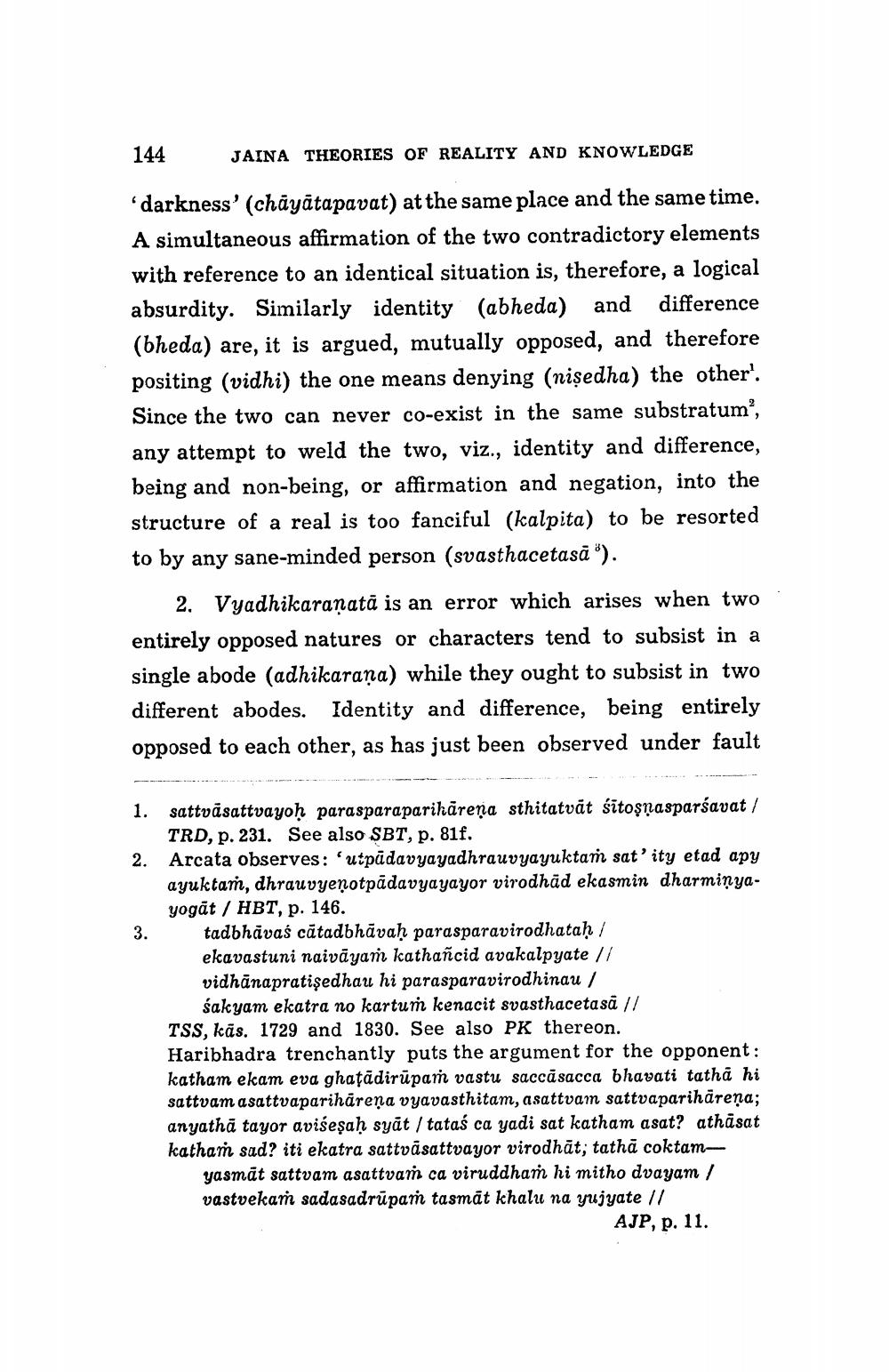________________
144
JAINA THEORIES OF REALITY AND KNOWLEDGE
'darkness' (chāyātapavat) at the same place and the same time. A simultaneous affirmation of the two contradictory elements with reference to an identical situation is, therefore, a logical difference absurdity. Similarly identity (abheda) and (bheda) are, it is argued, mutually opposed, and therefore positing (vidhi) the one means denying (niṣedha) the other'. Since the two can never co-exist in the same substratum2, any attempt to weld the two, viz., identity and difference, being and non-being, or affirmation and negation, into the structure of a real is too fanciful (kalpita) to be resorted to by any sane-minded person (svasthacetasă").
2. Vyadhikaraṇatā is an error which arises when two entirely opposed natures or characters tend to subsist in a single abode (adhikarana) while they ought to subsist in two different abodes. Identity and difference, being entirely opposed to each other, as has just been observed under fault
1. sattvasattvayoḥ parasparaparikāreņa sthitatvät sitoṣṇasparśavat/ TRD, p. 231. See also SBT, p. 81f.
2. Arcata observes: 'utpadavyayadhrauvyayuktam sat' ity etad apy ayuktam, dhrau vyeṇotpadavyayayor virodhad ekasmin dharminyayogat/ HBT, p. 146.
tadbhavas catadbhavaḥ parasparavirodhataḥ/ ekavastuni naivayam kathañcid avakalpyate // vidhānapratisedhau hi parasparavirodhinau /
sakyam ekatra no kartum kenacit svasthacetasă // TSS, kās. 1729 and 1830. See also PK thereon. Haribhadra trenchantly puts the argument for the opponent: katham ekam eva ghatadirupam vastu saccasacca bhavati tatha hi sattvam asattvaparihāreņa vyavasthitam, asattvam sattvaparihāreņa; anyatha tayor aviseṣaḥ syat / tataś ca yadi sat katham asat? athāsat katham sad? iti ekatra sattvasattvayor virodhat; tatha coktamyasmat sattvam asattvam ca viruddham hi mitho dvayam / vastvekam sadasadrupaṁ tasmāt khalu na yujyate //
AJP, p. 11.
3.




